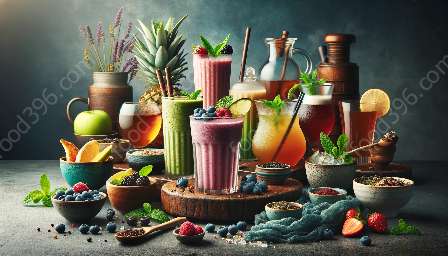Tea is not just a beloved beverage; it also serves as a versatile culinary ingredient.
When we typically think of tea, we think of a soothing, comforting beverage enjoyed on its own or with a sweet treat. However, the world of tea extends far beyond a simple drink. Tea has a rich history as a culinary ingredient in various cuisines, lending its nuanced flavors to a wide range of dishes and non-alcoholic beverages. In this exploration, we'll delve into the intricacies of using tea in cooking and beverage preparation and how it complements the world of non-alcoholic drinks.
The Versatility of Tea in Culinary Arts
Tea's versatility in the culinary world is vast, offering an array of flavors, aromas, and colors that can enhance both sweet and savory dishes. Its culinary applications range from enhancing marinades and infusing sauces to adding depth to desserts and creating unique non-alcoholic beverages.
Tea as a Flavor Enhancer
One of the most compelling aspects of using tea as a culinary ingredient is its ability to infuse dishes with complex flavors. The tannins and aromas present in various types of tea, such as black, green, oolong, and herbal teas, can impart distinct undertones to a wide spectrum of recipes. For example, black tea can contribute a slightly astringent and malty note to meat marinades, while green tea can impart a delicate, grassy flavor to custards and creams.
Culinary Pairings with Tea
Tea's ability to harmonize with an array of ingredients makes it an ideal companion in the culinary world. From classic pairings like Earl Grey-infused desserts or jasmine tea-infused rice to more innovative combinations such as smoky lapsang souchong-flavored caramel, the possibilities for culinary exploration with tea are endless.
Tea-Inspired Non-Alcoholic Beverages
Tea's influence extends into the realm of non-alcoholic beverages, where it serves as a foundational element in creating refreshing and flavorful drinks.
Mocktails and Tea-Based Beverages
The growing trend of mocktails has ushered in a new era of non-alcoholic beverage innovation, with tea playing a pivotal role. Tea-based mocktails offer an alluring alternative to traditional alcoholic cocktails, providing a diverse range of flavors and aromas, from fruit-infused iced teas to complex herbal blends combined with fresh ingredients.
Culinary Tea Blends for Beverages
Artisanal tea blends designed specifically for beverage preparation cater to the discerning palate by offering a myriad of options to create unique non-alcoholic concoctions. These blends are crafted to complement various flavor profiles, adding depth and complexity to mocktails, refreshing iced teas, and other non-alcoholic creations.
Traditional and Modern Applications
The use of tea in culinary and non-alcoholic beverage preparation is deeply rooted in tradition while also evolving to embrace modern culinary techniques and trends. From classic recipes that have withstood the test of time to innovative adaptations, the incorporation of tea in the culinary world continues to captivate chefs, home cooks, and beverage enthusiasts alike.
Global Culinary Influence
From the robust flavors of smoky Chinese black tea used in savory dishes to the delicate profiles of Japanese green tea in desserts, the global impact of tea in culinary applications is undeniable. Its presence in an array of international cuisines showcases the versatility and adaptability of tea as an essential culinary ingredient.
Emerging Trends and Innovations
As the culinary landscape continues to evolve, so too does the use of tea in non-alcoholic beverages and food. Cutting-edge culinary trends have introduced innovative methods of incorporating tea into dishes, such as tea-smoked ingredients and tea-infused stocks, demonstrating the enduring appeal and adaptability of tea in modern gastronomy.
Conclusion
Tea's role as a culinary ingredient encompasses a rich tapestry of flavors, culture, and history. From enlivening traditional recipes with its distinctive nuances to inspiring new interpretations of non-alcoholic beverages, tea stands as an invaluable asset in the culinary world. Its prowess as a versatile ingredient continues to inspire culinary creativity and elevate the realm of non-alcoholic beverages, ensuring that tea remains an enduring muse for chefs and mixologists alike.

